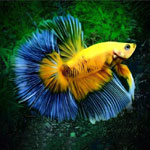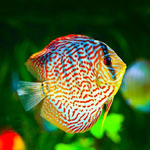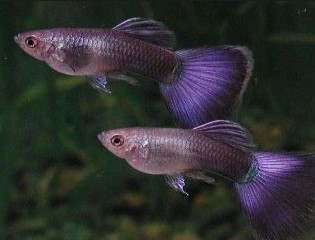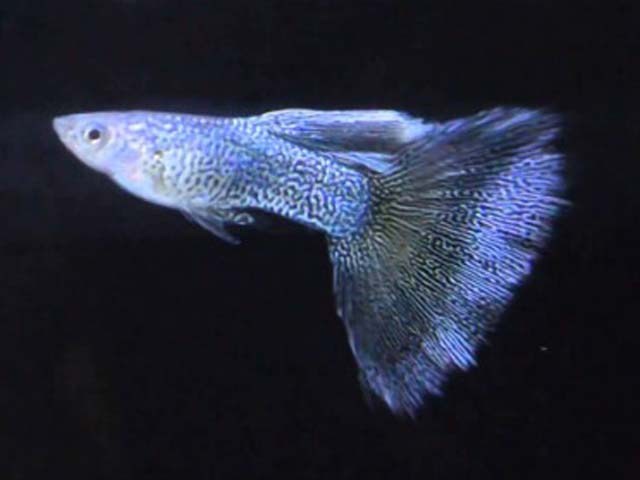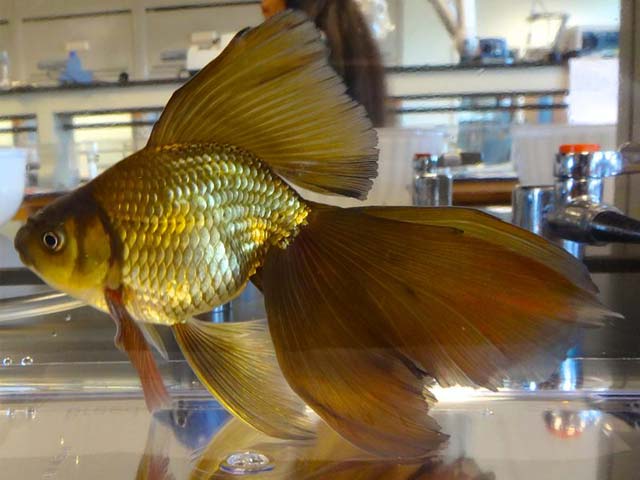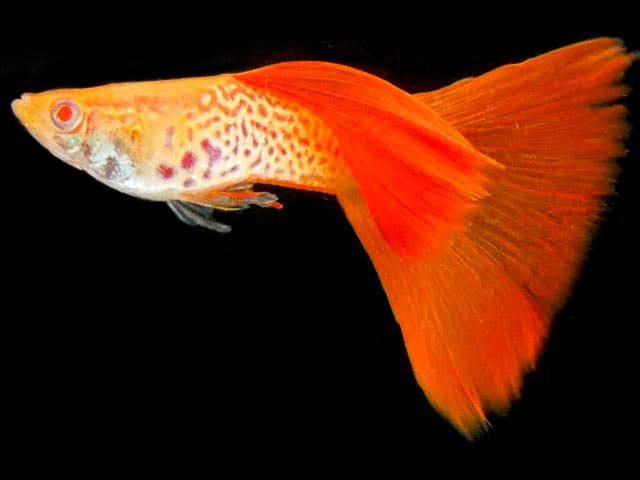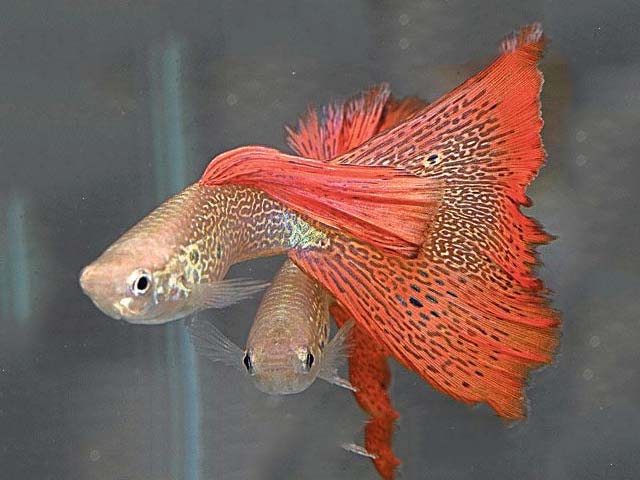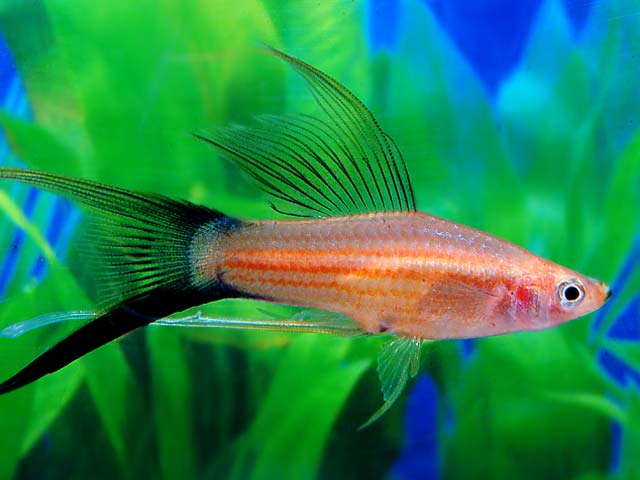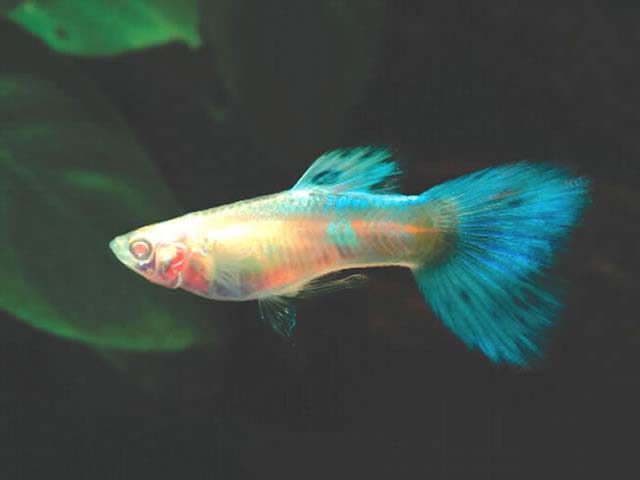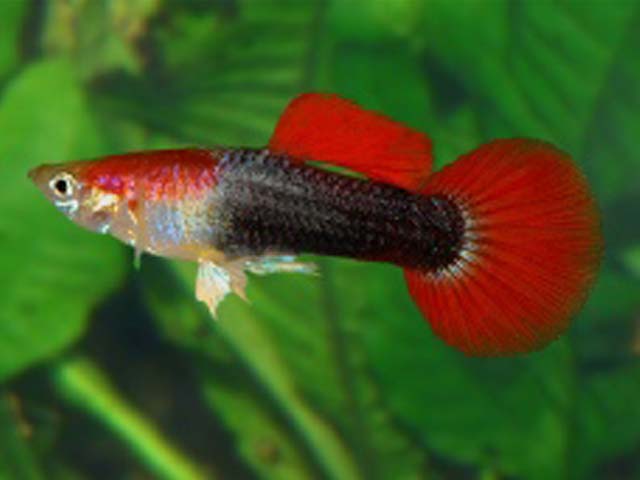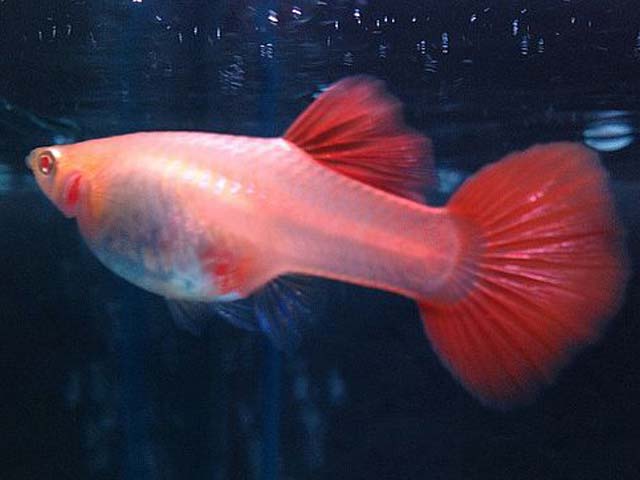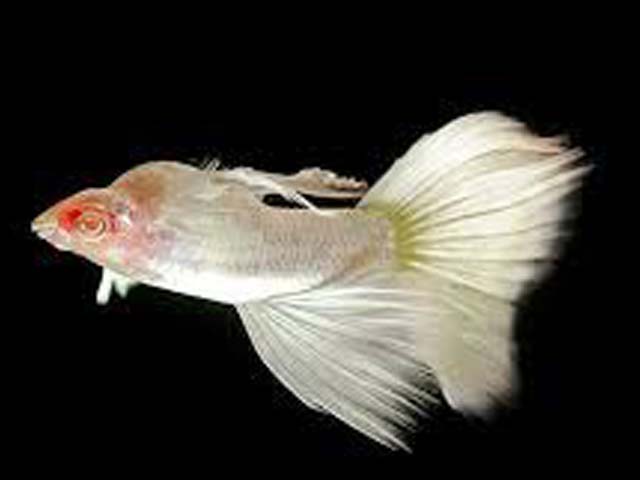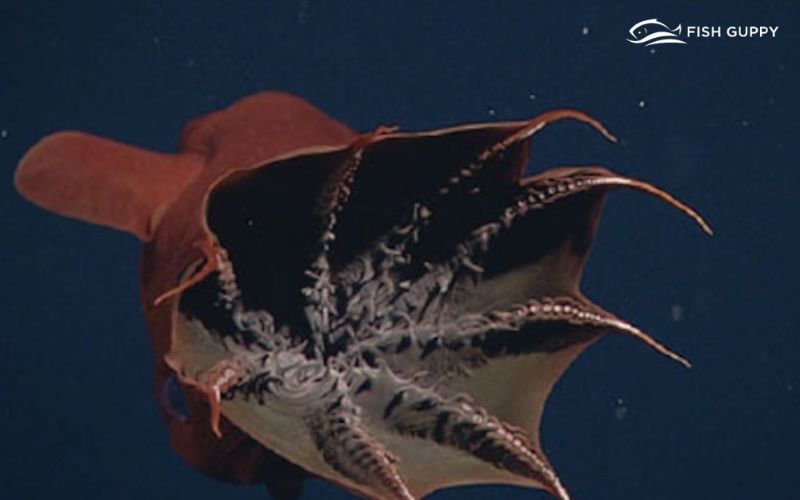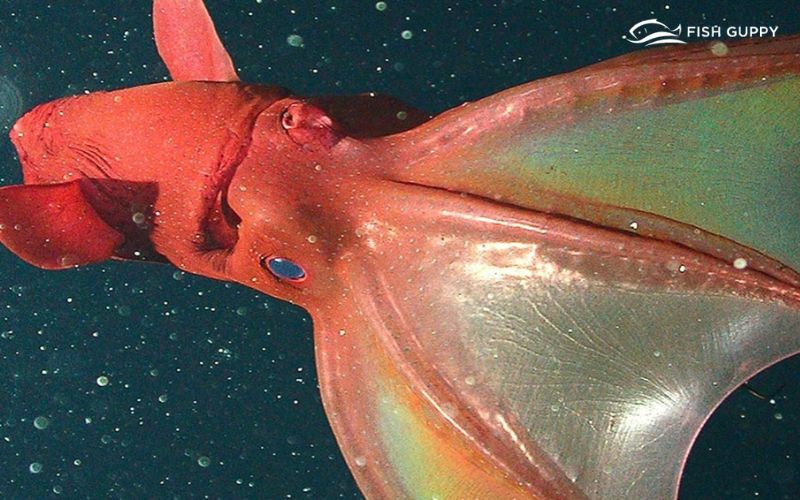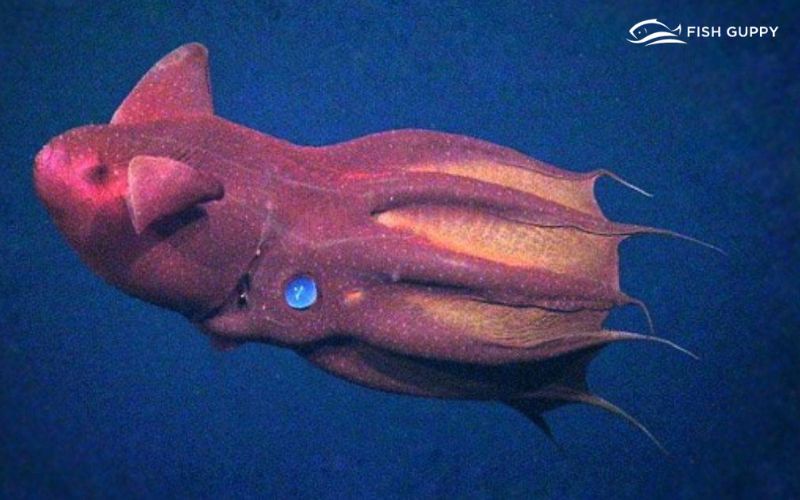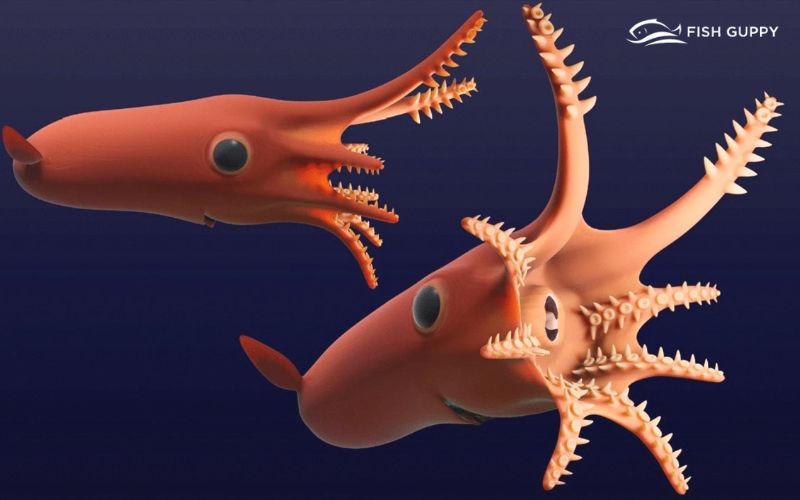Guppy Fish Breeding – How To Breed Guppies
March 12, 2018 Guppy Fish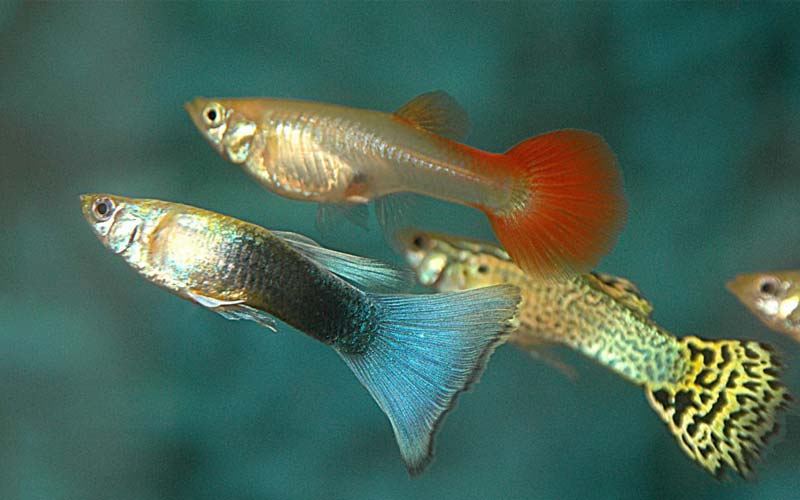
Guppy Fish is excellent life bearer and breeder, their babies are born live, while most of the fish lay eggs. Guppies are really easy and good for breeding. It is the most beautiful and colorful fish with cute faces and features. Before planning to breed these beautiful guppies creature, you need to learn the systematic way of breeding guppies and caring their pretty little fry.
It is obvious that every breeder would like to fill his aquarium with beautiful and colorful guppies. In this case, it becomes very important for a breeder to learn their colorful physical features, attractive appearances and also to care for these little beauties and their fry. The breeder should also need to select limited number of male and female guppies. The following are some of the important instructions that the breeder needs to follow for breeding guppies.
SELECTION OF NUMBER FOR REPRODUCTION
Firstly you need to select the number of fish you are planning to breed. Generally, the selection of male guppies and female guppies will be in the ratio of one is to three respectively. In case, if you plan to keep the guppies in the ratio of one to one, then male guppy get tired and make assault running behind the only female. In the ratio of one is to three the male can mentally focus and divide between all the female guppies. This make easy for female guppies in breeding process.

GUPPY TYPES AND SPECIES FOR SELECTION
There are numerous and various types of guppies with different body tail and eye colors, patterns and textures. Most of the breeders are constantly experimenting to produce new varieties at all times.
If you are breeding for the first time, then you are advised to focus on limited and specific trait. Guppies are in different body, fins eyes and tail patterns with different bright colors. Some of the body patterns are as follows;
TYPES OF GUPPY WITH COLORS
SELECTING THE BEST BREEDING TANK AND SETTING UP
At once you select your favorite and beautiful guppy for breeding, select the breeding tank of about 10 to 20 gallons. Keep the water parameters at normal range between 6.8 to 7.8 and the temperature 77 – 79 degree Fahrenheit. A guppy needs 12 hours of lighting in a day fix a timer clock to ensure that the lights are turned on and off at the right time.

- If you are a beginner, you can use a 10 or 20 gallon tank which is a good breeding setup unless you are handling a very large fish. A small tank makes it easy to monitor everything that is happening within the tank and to track the pregnant female and fry.
- Don’t overfill the tank with water and see that the lid is in good condition to avoid guppies from jumping out in excitement.
- Decorate the tank with stones and flower pots so that, the female guppies can hide when the male gets aggressive after seeing the strange females and may try to kill them.
- Until they get used to each other the female guppies must hide themselves and then mate, which is one of the major task of breeding.
- Plants play an important role in a breeding tank. There are many advantages of plants in a breeding tank, they help to generate more natural environment and motivate breeding. You can discuss with your supplier of plants and buy the best plants for a breeding tank.
- You need to divide the tank with the help of divider, 75% of the tank for adults and 25% of the tank for fry. Put tiny holes on divider to avoid fry getting over to the other side.
SUBSTRATE

Most fish are very happy and comfortable to breed in a tank without gravel.
The breeder can clean and monitor the eggs and fry easily in the absence of gravel in a breeding tank, but a layer of fine sand can protect the fry from getting lost or trapped by adult guppies easily in sand, but it is also good to keep the bottom of the tank bare for fry as it cleans and can be recorded easily the number of fish alive and the amount of food to be eaten by them. When we use filters for cleaning, it is highly recomended to use sponge filters in fry side of the tank, as they introduce less turbulence. The sponge filters suck the fry from the breeding tank while cleaning.
TEMPERATURE SETUP
Select the breeding tank of about 10 to 20 gallons. Keep the water parameters at normal range between 6.8 to 7.8 and the temperature 77 – 79 degree Fahrenheit. A guppy needs 12 hours of lighting in a day fix a timer clock to ensure that the lights are turned on and off at right time.
PLACING THE GUPPIES IN THE BREEDING TANK
At once the breeding tank is ready with all the necessary requirements in the tank along with temperature adjustments, proper ph level of water and the timer clock of lights for turning off and on at the right time, place the male and females for breeding. Now wait for your guppies to breed, when you notice that the females are pregnant take the males back and place them in a regular tank.
BREEDING PROCESS
The process of breeding guppies is straightforward and gives hopeful results. When the male guppies feel comfortable with female guppies, they try to approach female guppies aiming to inseminate them. The females try to escape from this activity, the male chases and get closer enough extending his gonopodium towards female’s anal vent. The gonopodium is a modified anal fin of a male guppy which is in the shape of rod. This fin is held behind his ventral fins and the male fish turns it down and deposit packets of sperm to the female within a fraction of time.
To know whether female guppy is pregnant or not you need to observe her abdomen and find the dark mark on it. That mark is called a gravid spot. The female guppies develop these marks when they become pregnant. As you notice this mark it gets darker when the eggs have been fertilized.
GESTATION PERIOD
The average gestation period of a guppy is between 22 and 28 days. The gestation period varies depending upon her environment and the condition of the water. If the water is too cold the delivery may prolong. Hence the cold water slows down the progress of fry. Sometimes the guppy may delay her delivery when too many fish in the tank torture her.
MONITORING CAREFULLY IN THE LAST STAGE OF PREGNANCY
Beware of the fact that guppies are live bearers and they give birth to live babies. When her pregnancy is discovered by seeing the dark gravid spot in the abdomen observe birthing process carefully. When you find change in appetite of these female guppies, like not eating food or spitting it out or has become inactive, shivering or keeping themselves alone, you should understand that guppy is going into labor. Monitor the female carefully during her last stage of pregnancy and remove her immediately soon after she delivers the fry because the guppies may turn cannibalistic sometimes.
CARING AND FEEDING FRY AFTER BIRTH
Fry to be fed newly hatched brine shrimp, plenty of rooted and floating plants, vegetable flakes, standard flakes, freeze-dried foods, little amount of boiled spinach, fresh lettuce. Fry has to be fed twice in a day and the food should be fed in a small amount as the mouth of fry is very small.
You may find it difficult to depart the mother with her babies, it seems like an unkind act but soon after the birth remove the female guppy from the breeding tank away from the fry. As it is mentioned above that guppies belong to cannibalistic species and they may eat their babies out of hunger.
MAINTAINING HYGIENE AND SUITABLE TEMPERATURE FOR FRY
After successfully breeding the guppies and departing the fry from others, you need to check the cleanliness of the water and the fry though it is utterly vulnerable. The fry has to be observed very closely for sudden eruptions of ill health and diseases. To avoid this eruption basically you need to keep the water clean. Do not feed excessively and pollute the tank, if the water is polluted it gives way for diseases and will hinder the growth of fry. Do not put large amount of food that it will be left uneaten by the fry and get rotten at the bottom.
It is really vulnerable to clean the tank in the presence of fry, but it is also necessary to keep your fry free from diseases. Both in the absence and presence of fry it is important to clean using a gravel siphon to vacuum the litter or remains from the bottom of the tank. Adjust the temperature of the tank according to the need of fry. Normally keep the water temperature at 75 – 80 degree Fahrenheit. Do not raise the temperature beyond the range.
CLEANING RISKS
Fry seek protection instinctively and try to hide under plants and behind stones, which are typically layered at the bottom along with gravel. While cleaning we may face difficulties if we disrupt the fry’s hiding places, they may be gobbled up by the adult fish.
One more difficulty that we may face while cleaning is the fry may be sucked up into the gravel vacuum. In order to save your fry from these types of risks you need to move the stones and plants to the side of the tank where they can’t find hiding spot, siphon the empty area then check the bucket in which water was being supplied after sucking and take care of fry if any. After clearing the empty area, replace the stones and plants and make the adult fish to move towards the cleaned area to protect the fry.
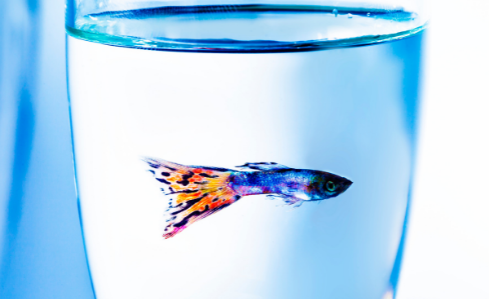
You can also protect them by keeping some clean clay pots so that they can hide or dart in them for protection and you find easy to vacuum their areas. Clean the tank using gravel siphon on regular basis.
PLACING THE FRY TO THE FRY TANK
- If you want to save your fry from adult guppies, you need to remove them safely and place in a fry tank, where they can grow with no harm.
- Do not decorate a fry tank with lots of stones and plants.
- You can also use a floating breeder tank inside the big tank, netting the fry carefully and moving them to the breeder tank.

